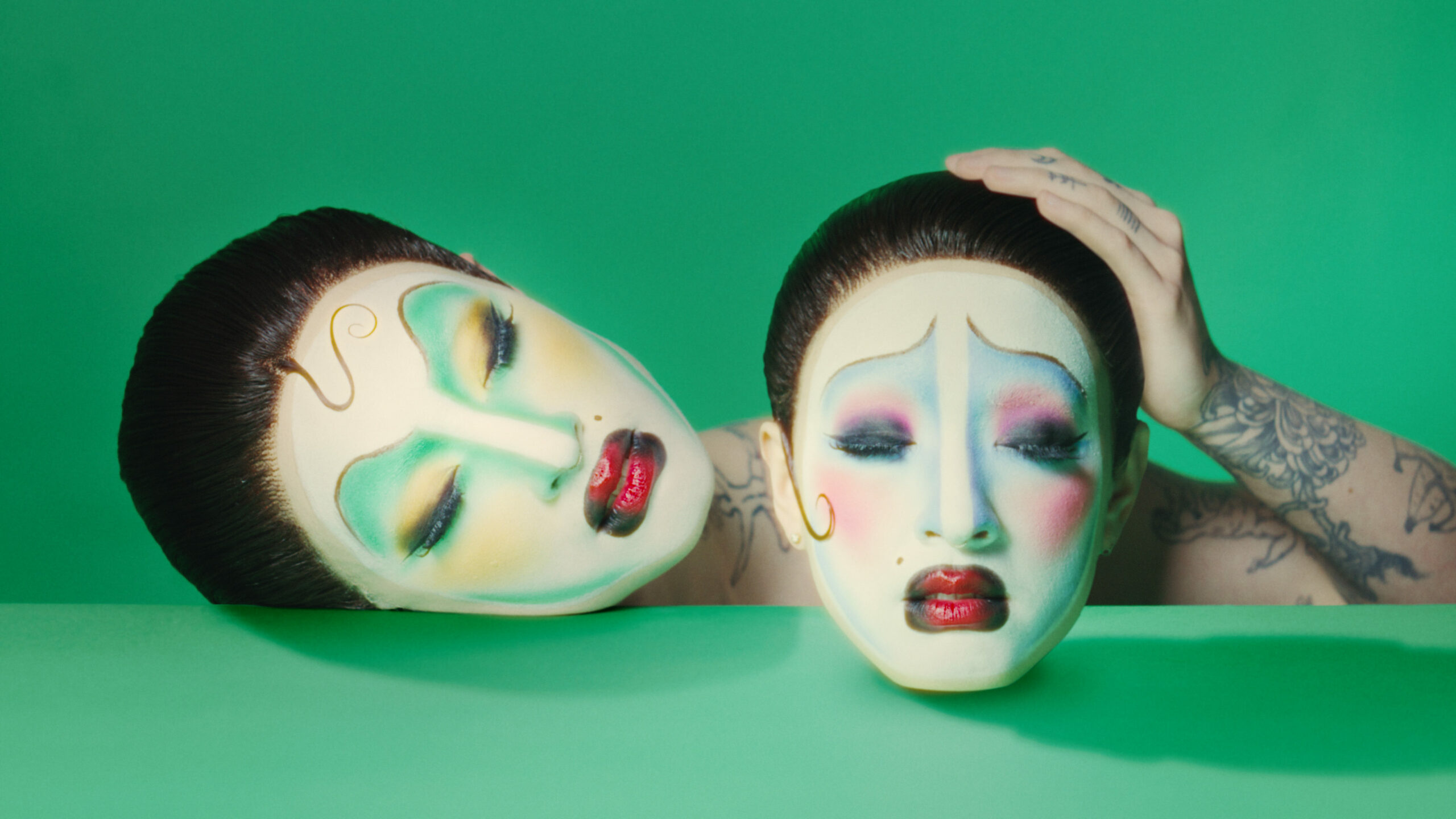
Entering Sin Wai Kin’s exhibition Portraits at Soft Opening is a transformative experience. On crossing the gallery’s threshold, one accepts an invitation to become another actor in the artist’s self-authored world, an uncanny, ever-changing realm where hegemonic narratives crumble, binaries dissolve, and anything is possible.
Flowing white velvet curtains line the perimeter of the space, theatricalising the walls of the gallery and underlining the notion that this is a performative realm where identities can be tried on and cast off at leisure. The elegant drapery is punctuated by five screens, each hosting a single character: a cast of complex, vivacious, and symbolic beings that confront the viewer with intimidating stillness. Moving beyond the central room, one is faced with a question; five wigs balanced upon Jesmonite busts ask, Who do you want to be today? The viewer resists the urge to place a wig upon their head, an experience that would offer a glimpse of the liberatory potential of drag at the heart of Sin Wai Kin’s practice.
Indeed, this exhibition is an organic extension of the Canadian artist’s investigation of drag as a medium for embodied speculative fiction. Having previously been exhibited at Art Basel in 2023, each moving image portrait is an intense and concentrated examination of a single character from Sin’s ever-expanding universe. Otherworldly, deliberate and thoughtfully constructed, these figures reappear across Sin’s oeuvre and give form to various facets of their personality, some real and some imagined. Born from extensive and diverse research, every persona is imbued with feminist science-fiction narratives, Taoist philosophical principles, archetypes from Peking and Cantonese opera and reinterpretations of canonical images from art history.
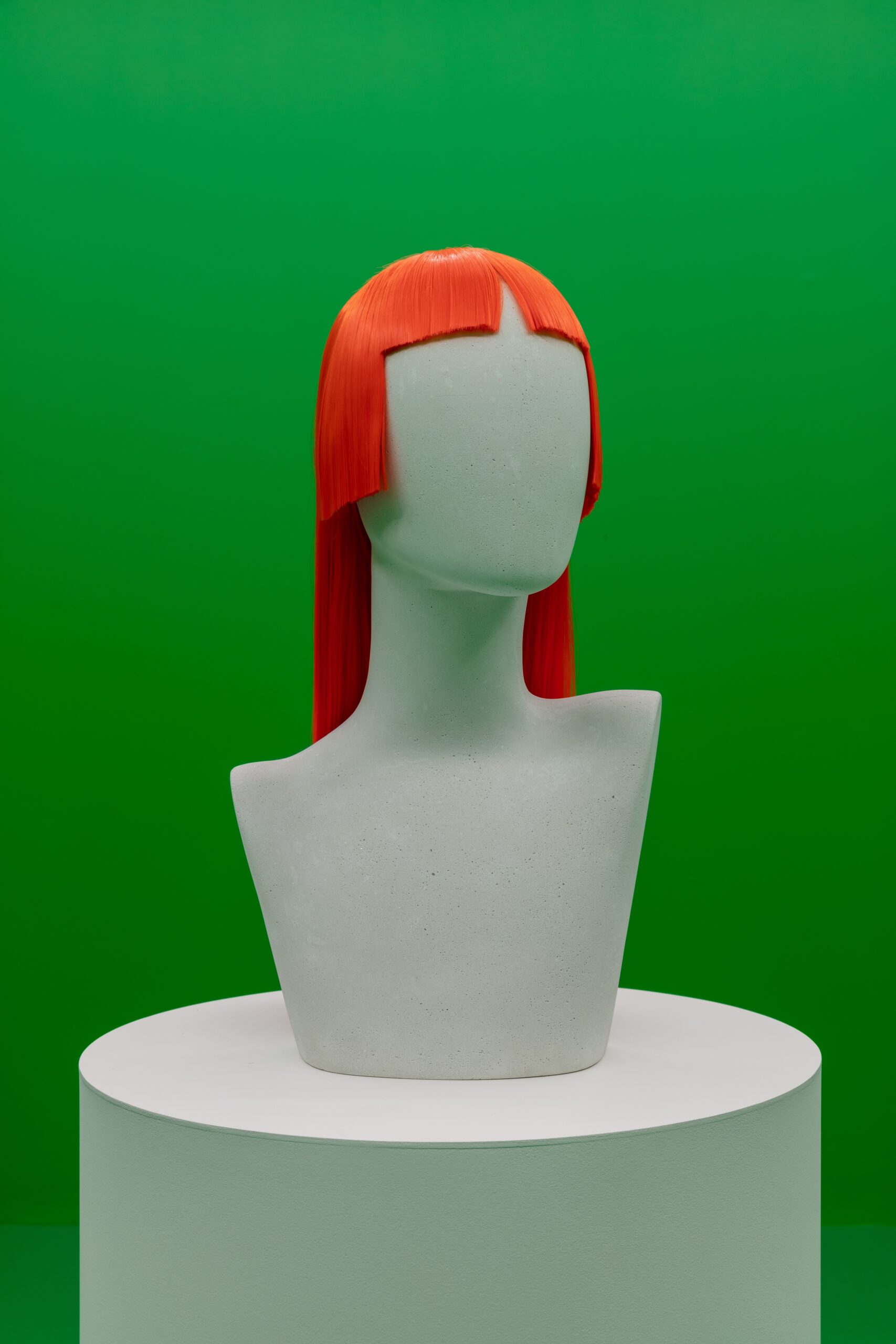
The Universe, a central protagonist in Sin’s Turner Prize-nominated film, A Dream of Wholeness in Parts (2021), is inspired by a hero of Hong Kong cinema, Tony Leung Ka-Fai and the Zing (warrior) role in Cantonese opera. In the exhibition, The Universe is recognisably adorned with elaborate, pictorial make-up and reclines peacefully upon a tree branch. The sleeping figure is perhaps an allusion to the role and importance of dreaming in Sin’s practice; dreams are often used as a tool to destabilise the conception of perceived reality as objective truth. Posed within a notably surreal setting, The Universe operates as a summons to the viewer to consider the impact of their context on their self-conceptualisation. If the world did, in fact, appear as presented by Sin in this piece, what role might you play?
Another cast member of A Dream of Wholeness in Parts resurfaces in Sin’s Portraits. Taking influence from the feminine Daan role in Cantonese opera, The Construct is a manifestation of the falsehood of imposed binaries and, as its name suggests, an explicit exploration of the construction of identity. Appearing against a greenscreen background rather than in a CGI environment, this portrait’s staging (or lack thereof) reveals the techniques deployed in computer-generated filmmaking, thereby reminding us that much of what we see is not real. The Construct’s wig, meanwhile, is made of Sin’s own hair. Symbolic of the artist’s personal journey with their gender identity, the wig disrupts the relationship between performer and performance, allowing us to discover that there is no original Sin. The portrait thus suggests that all identities (and genders) are a performance (à la Judith Butler).
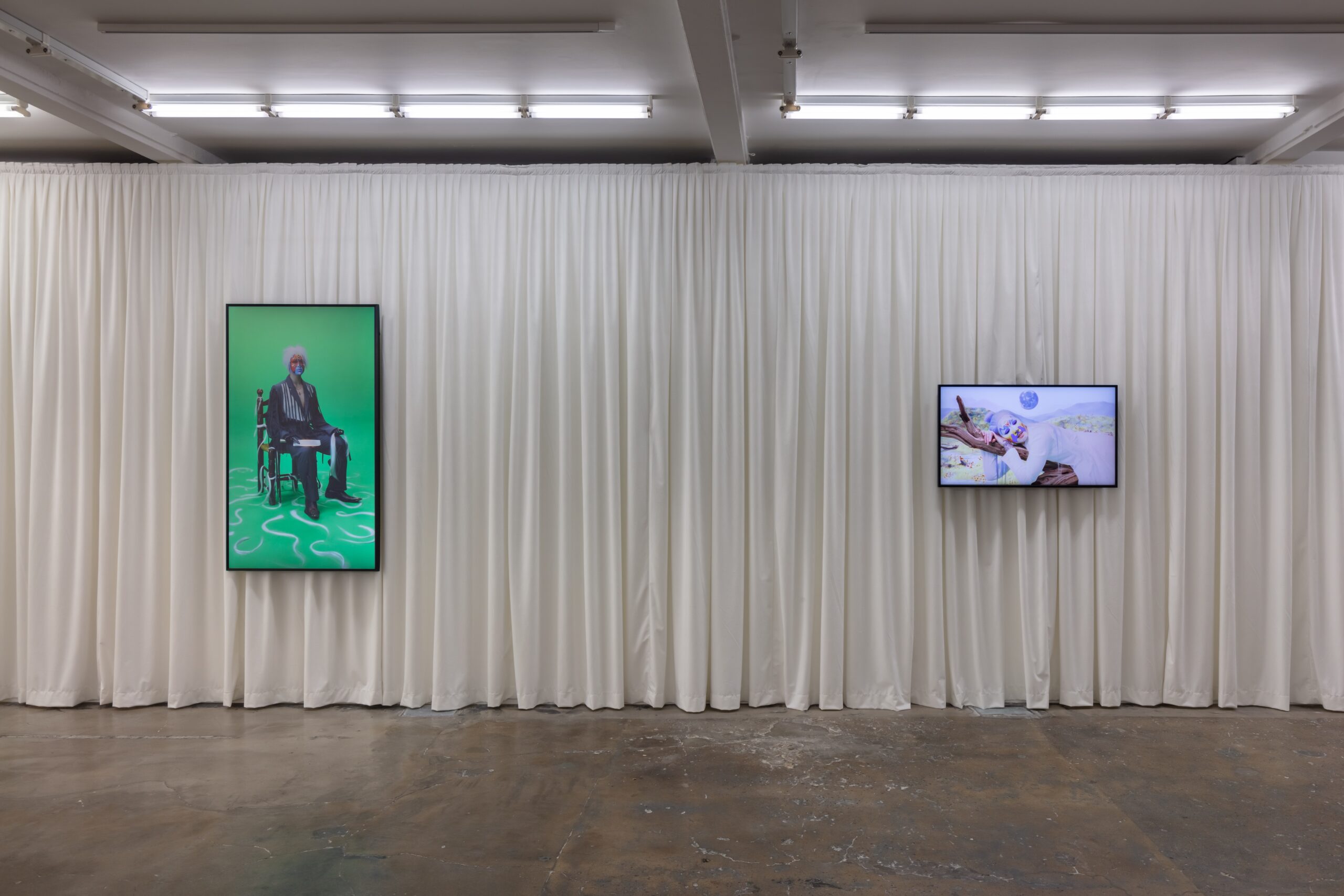
In addition, The Construct is presented as an individual of two halves, each with the same costuming but slightly different make-up – the demure one is rendered with eyebrows angled up, while the more menacing other’s eyebrows point down. While emphasising a key message implicit in Sin’s work, that individuals contain multitudes, the two-headed Construct serves as a warning of the consequences of attempting to continuously conform within ever-changing contexts. Just as the visible greenscreen is suggestive of the many possible backdrops that might frame this vignette, the multi-headed nature of the figure lays plain the many roles we play as we attempt to bend to the ever-shifting, context-dependent expectations we face.
While it is alluded to by the figure of The Construct, the topic of gender is explicitly explored through Wai King. A hypermasculine character who previously appeared as a member of Sin’s imaginary boyband in their 2021 film It’s Always You, Wai King was also displayed as a life-size cutout by Blindspot at Frieze London (which still lingers ominously in Soft Opening’s office). In Wai King’s portrait, he appears as a Narcissus-like antihero, eternally gazing into his reflection as in the age-old parable of masculine arrogance. When considered alongside the other works on show, this piece takes on another layer of meaning. We may interpret the glistening, watery puddle into which Wai King stares as a metaphor for the entire exhibition – a series of portraits as a mirror to the viewer. As we identify with Wai King, embracing the liberation (or bondage, depending on your perspective) of unbridled masculinity, we, too, find ourselves looking into the mirror in search of someone we may never find.
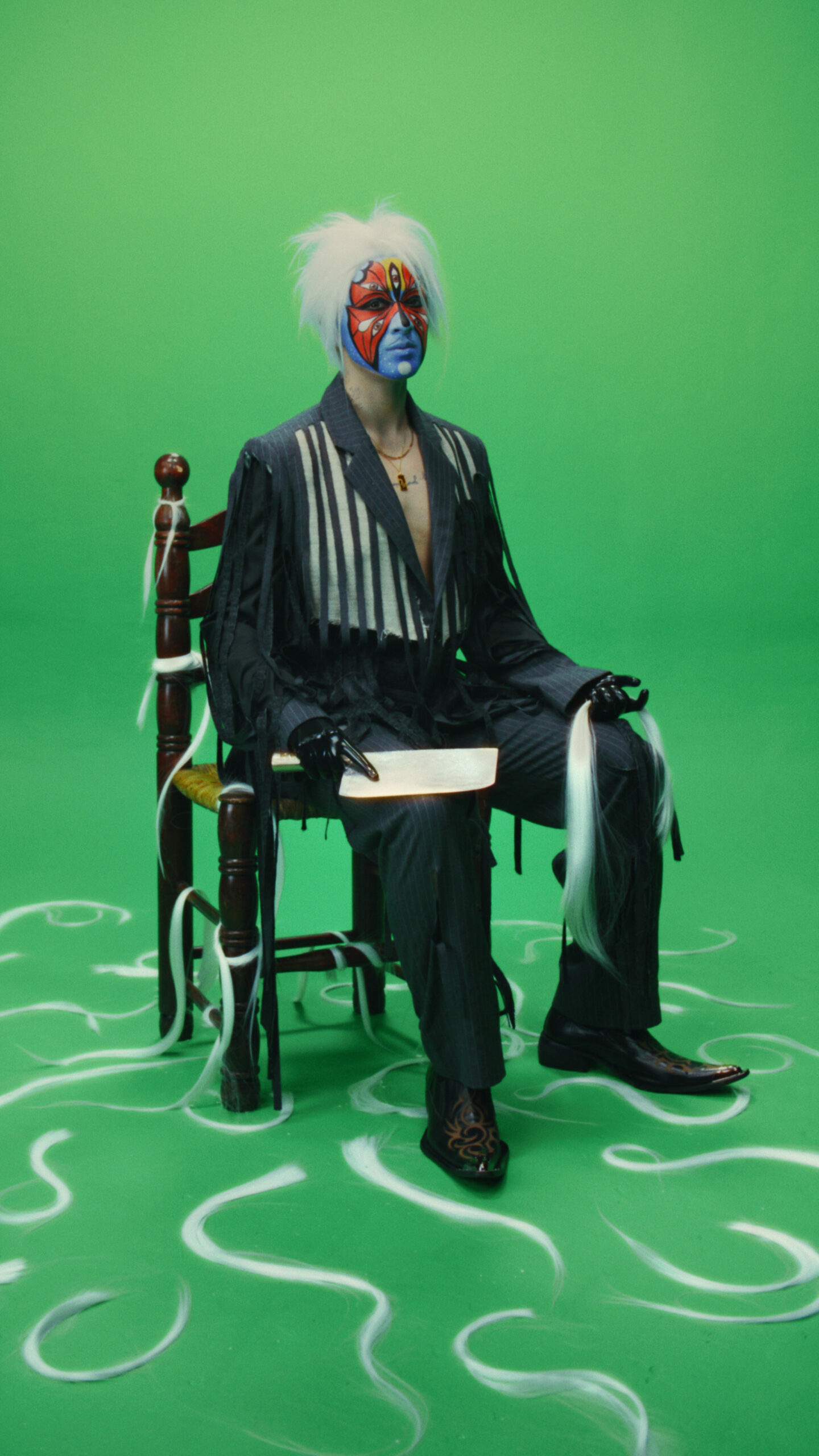
If Wai King is a mirror for the self, the iconic Storyteller sees Sin holding up a mirror to societies and the stories upon which they are built. The first full-fledged masculine character to have taken an ongoing place in Sin’s work, The Storyteller is an authoritative, alien-like newsreader. Starring in his own film, Today’s Top Stories (2020), The Storyteller delivers contradictory statements of pure nonsense, creating a narrative as unstable as the blue star that implodes in the background. Sin has recounted that The Storyteller was directly inspired by their experience of a “totally pathetic, frustrated feeling” brought forth by watching the news and “knowing [they’re] being manipulated”, alongside their fascination with Zhuangzi’s Dream of the Butterfly (a third-century thought-experiment in which the philosopher questions whether he is a man dreaming he’s a butterfly or a butterfly dreaming he’s a man).
Underscored by the message of this Taoist tale – namely that the subjectivity of perception, transient identities and unfixed realities go hand-in-hand – The Storyteller’s primary purpose is to dislodge hegemonic narratives by positioning storytelling as a subjective act that can be performed by anyone. Posed as the orator of ‘Today’s Top Story’ set against a futuristic city backdrop in Portraits, The Storyteller acts as a reminder to seek alternative narratives. Although there is no audio, we can confidently assert that the ‘top story’ on The Storyteller’s planet is unlikely to be the same as on ours: the tales that get told are determined by those who tell them.
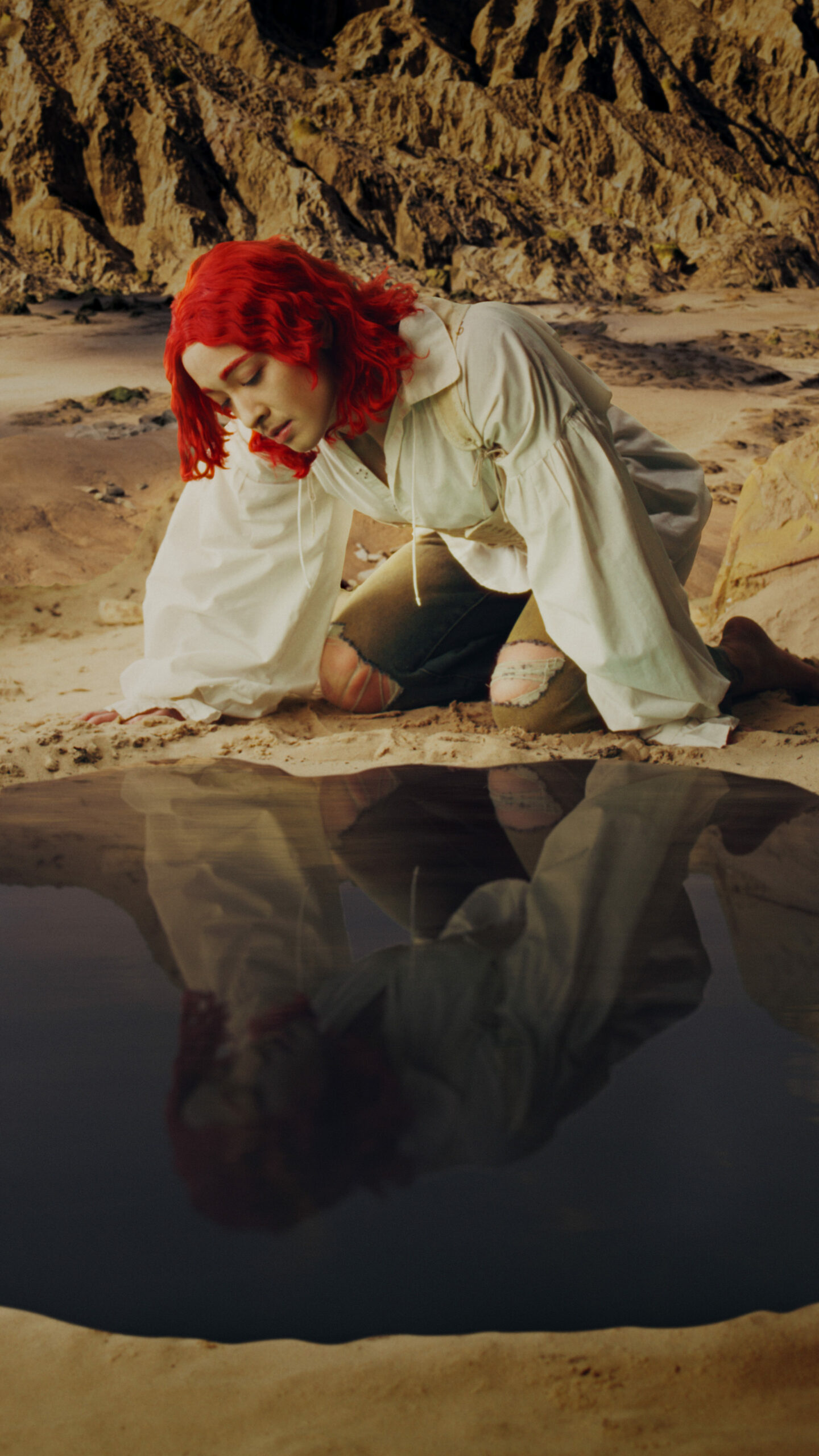
In the show, nothing escapes Sin’s wit and wry criticism. The gallery space itself is a comment on the white cube, the lengths of dramatic fabric drawing our attention to the construction of the exhibition space and the history of erasure implicit within it. By presenting the screens as if they are paintings, Sin taps into a genealogy of images within which bodies and identities like their own are conspicuously absent. Indeed, each portrait references a famous artwork from history, including Man Ray’s Kiki with African Mask (1926), Caravaggio’s Narcissus (1597–1599), Frida Kahlo’s Self-Portrait with Cropped Hair (1940), Leonardo da Vinci’s Mona Lisa (1503) and Lu Zhi’s Chuang Tzu Dreaming Of A Butterfly (Ming Dynasty). By retroactively inserting their characters into the art history canon, Sin historicises their own practice. In so doing, they threaten The Story of Art as penned by Gombrich and others and position themself as the creator of histories. The portraits become synonymous with giants of art historical significance, and a new lineage is formed from pixels instead of paint. If nothing else, we come away with the knowledge that when one is considering the past, present or future, there is never just one story.
In contrast to the intensity of the primary exhibition space, the gallery’s second room (or the ‘green room’) is inherently playful. Containing five wigs presented nobly on busts, the green room highlights the fact that, of the characters featured in Portraits, no one and everyone is Sin, just as no one and everyone could be us. In an interview with Tate in 2022, Sin said, “Every character that I’m trying to create is a reflection or a site for people to see themselves”. Surrounded by the paraphernalia of performance, divorced from context and floating in green nothingness, we come to realise that we, too, can be anyone we want to be.
Words by Bella Bonner-Evans. Images courtesy the artist and Soft Opening, London.





